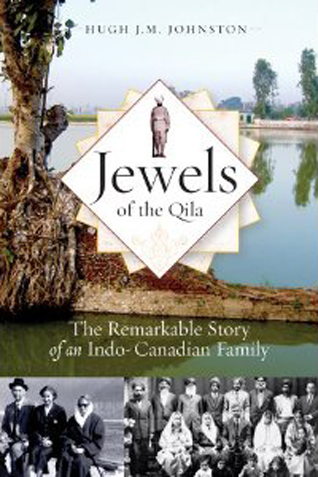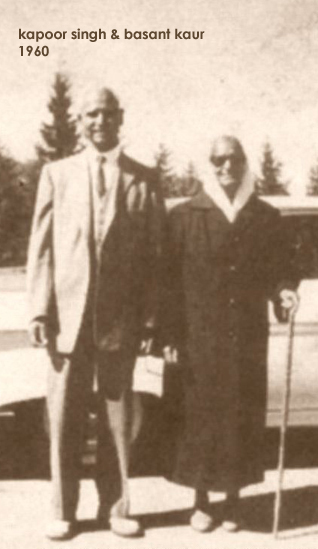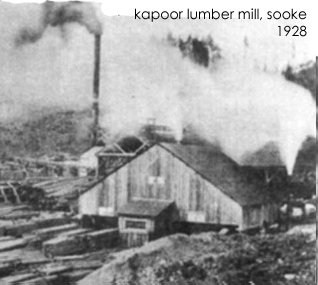Books
The Saga Of A Sikh-Canadian Pioneer Family
A Book Review by BALWINDER KAUR
Jewels of The Qila has been selected sikhchic.com's Book Of The Month for April, 2012
JEWELS OF THE QILA: THE REMARKABLE STORY OF AN INDO-CANADIAN FAMILY, by Hugh J.M. Johnston. UBC Press, Canada, 2011. Hardcover, English, pp 336. ISBN-10: 0774822163, ISBN-13: 978-0774822169.
Sikhs have a global presence today and make valuable contributions to both the country they inhabit and their native country. They bridge the gap between different cultures and mindsets. The trials and triumphs they experience hold valuable lessons for those who wish to follow in their footsteps and seek their fortunes abroad.
Jewels of the Qila by Hugh J.M. Johnston is "a family history about members of a minority community that has enjoyed remarkable success despite weathering decades of social and legal discrimination.”
Kapoor Singh Siddoo, the educated son of a respected Sikh jagirdar family, made a life-changing decision when he left his job in Calcutta, family in Kharoudi and wife Basant Kaur; to join a group travelling to North America in search of better prospects.
His challenging task of gaining a foothold in a foreign country started in San Francisco in 1906, where he faced both prejudice and discrimination. He was part of the first wave of Sikh immigrants who were students, labourers, nationalists and political refugees.
Work was often hard to find so he moved back and forth between British Columbia and Ontario in Canada. Over the years, many left due to loneliness, hardship and homesickness.
Kapoor Singh’s first major endeavour was a lumber mill started as a joint venture with Mayo Singh. They faced numerous difficulties and setbacks; a series of fires in which foul play was suspected, economic depressions and the ever-present resentment of local business owners.
After 16 years, his wife Besant Kaur finally joined him and they were soon blessed with two daughters; Jagdis and Sarjit.
His partnership with Mayo Singh lasted 26 years, after which he started his own lumber business in Vancouver. By the sheer dint of hard work and perseverance in the face of overwhelming odds, Kapoor made a successful transition from labourer to millionaire.
The socio-political aspects of immigrant life posed their own hardships. They had obligations and duties but enjoyed no rights. Civil rights were fought for tooth and nail and every inch gained was hard earned.
In order to retain their identity and encourage political activism, Kapoor interacted with many prominent leaders of the Sikh-Canadian community.
Kapoor Singh was a quiet and modest man devoted to his community. Both he and his wife nurtured in the hearts of their daughters a great love of Punjab and the subcontinent. They wanted them to become doctors and return to Punjab to establish a hospital and serve the community.
The girls gladly followed those plans and in 1945 they enrolled in Toronto University to study medicine. Jagdis and Sarjit had pleasant memories of their previous trips to India but when they began the process of constructing the hospital, they quickly became frustrated with India's red tape and unwarranted hostility.
They were both steadfast and stoic by nature, qualities no doubt inherited from their parents. And they dived into the details of building a hospital, acquiring building materials, hiring contractors, finding and purchasing medical equipment. And finally in the November of 1959, the Kapoor Singh Canadian Hospital opened in Aur, Punjab.
Their mother instilled in them a love of their own religion and a respect of others. Their passion for things spiritual gravitated them to the works of activist Vinoba Bhave and philosopher Jiddu Krishnamurti. To spread the latter's teachings, they opened the Krishnamurti Education Centre of Canada in 1977. As Jagdis and Sarjit had little interest in commercial enterprise, Kapoor sold his business in 1959 and he passed away in 1964.
Both sisters found suitable matches when Jagdis married Donny Luther and Sarjit wed Avtar Singh Atwal; their daughter Chandramapatti was born in 1966.
The sisters remained committed to the hospital long after their mother’s death and continued seeing patients even at 80.
Hugh J.M Johnston is a historian and this is his third book about Sikh-Canadians. He exhibits a thorough understanding of the history and culture of Punjab. The account is factual, yet not impersonal, and the socio-political climate is analysed in a contextual manner. He skilfully describes events spanning a century, multiple generations and continents. The author being an academician ensnares more serious readers than casual ones.
Robert Frost wrote about choosing “the road less travelled” and how that made all the difference. Kapoor Singh Siddoo embodied the enterprising spirit of all immigrants.
[Courtesy: Tribune. Edited for sikhchic.com]
April 8, 2012
Conversation about this article
1: Baldev Singh (Bradford, United Kingdom), April 08, 2012, 12:09 PM.
Sikh-Canadians and Sikh-Americans have done better than any other group, despite all the hurdles put their way. The BBC have done research which shows Sikhs, as an ethnic group, are the highest earners in America! Not surprising, at all.






